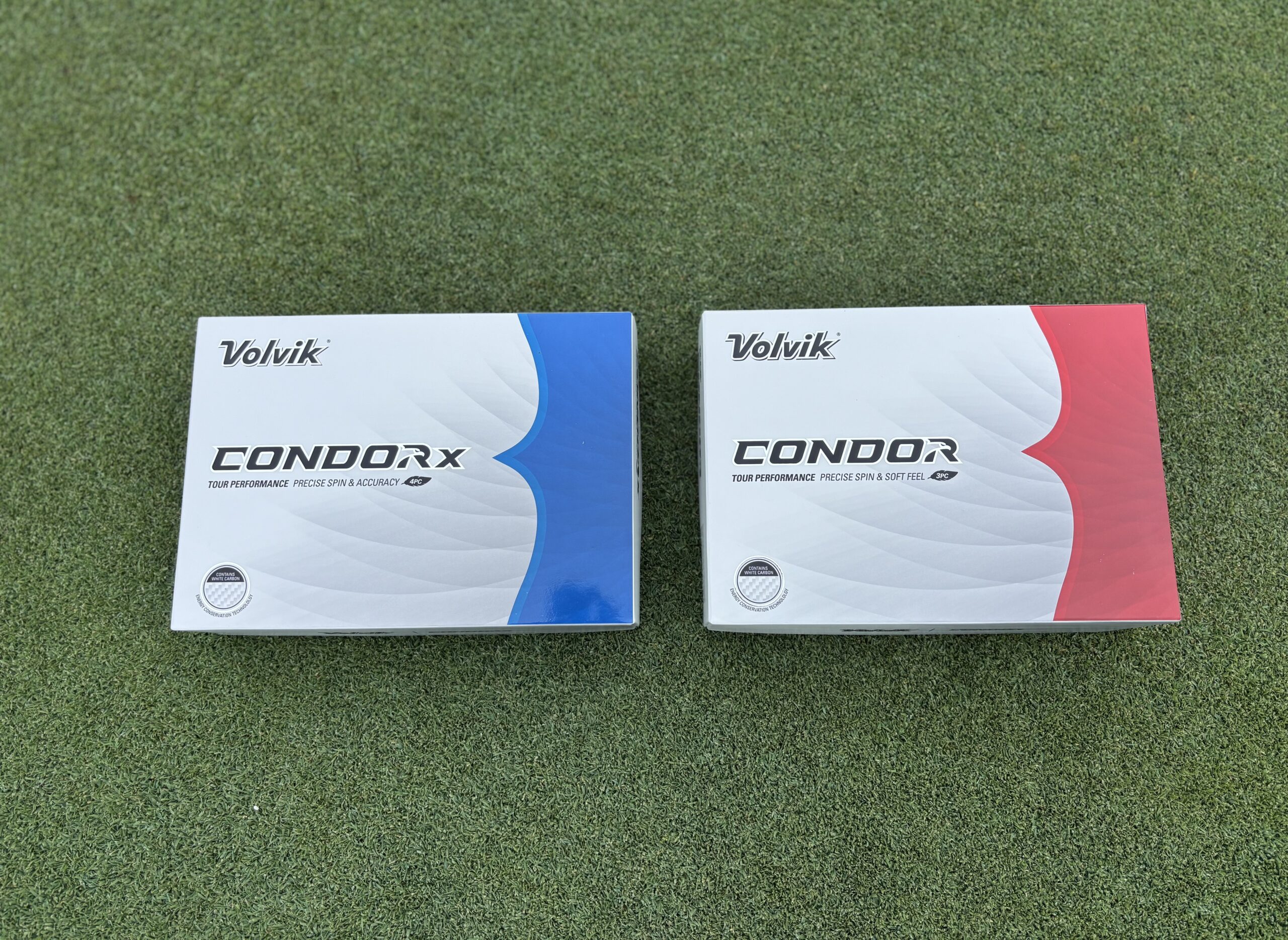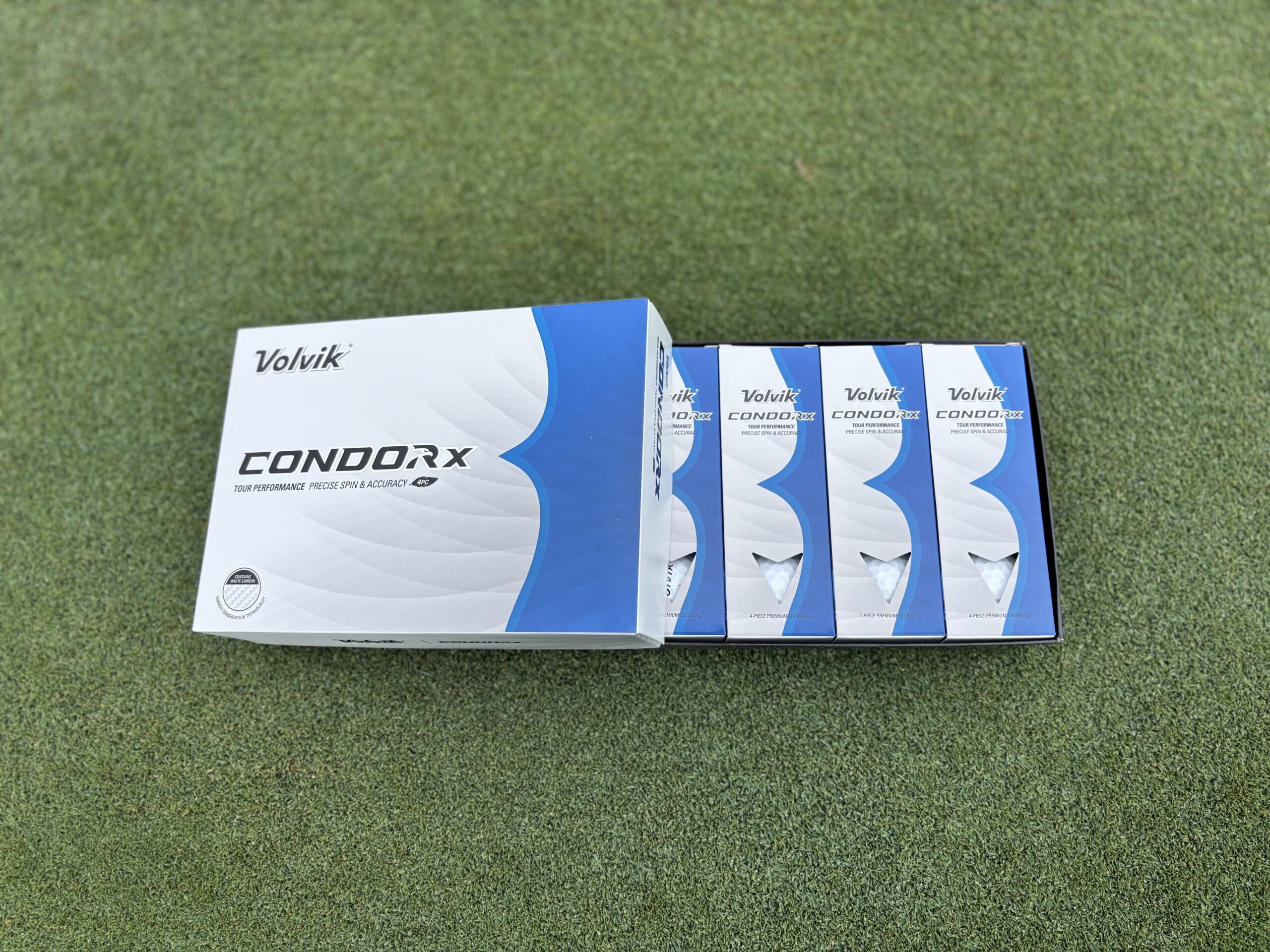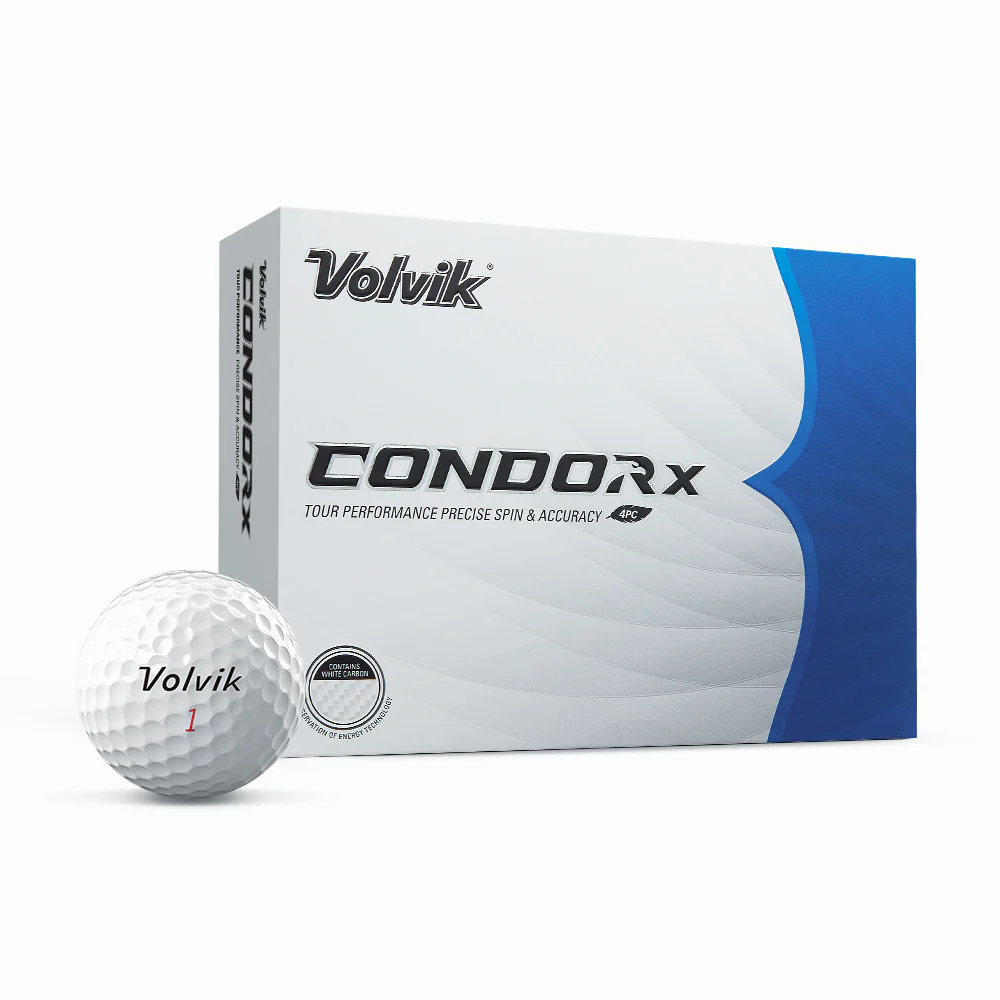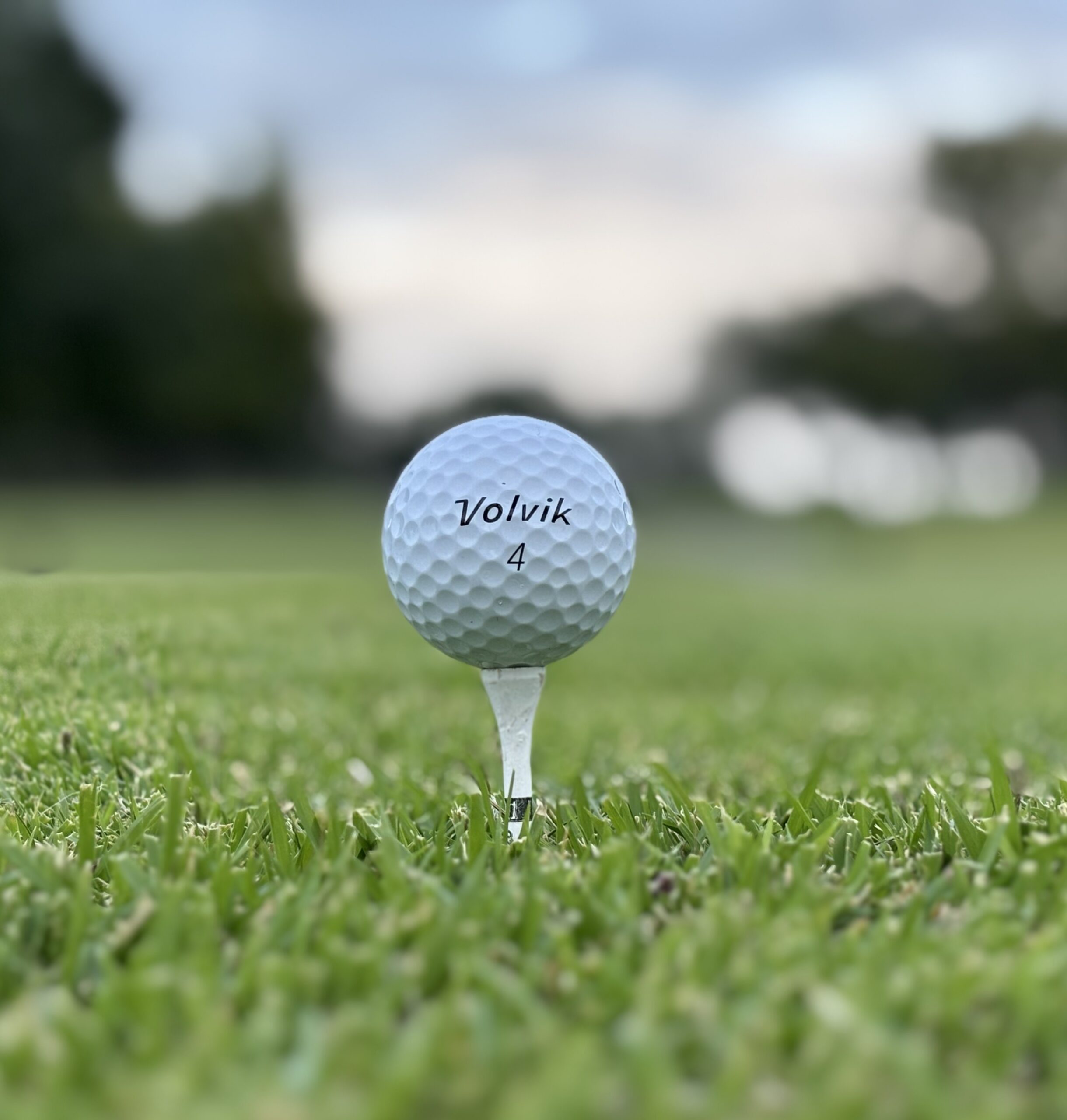When most golfers think of Volvik, they still picture bright matte finishes or novelty collaborations. That reputation is well-earned. It was basically Volvik’s model for decades.
But in recent years, the brand has been working hard to expand beyond colors and collectibles. Their Condor and Condor X golf balls are the clear example of that shift. Both are urethane-covered, tour-caliber models designed to compete directly with the most popular premium balls in the game.
The kicker? They retail for $42.99 per dozen. And with the BREAKINGEIGHTY code, you can tap into the “buy 3, get 1” promotion that knocks the effective price into the low $30s. That means these may be the most affordable legitimate Pro V1 alternatives on the market.
For golfers who’ve always wanted to play a true tour ball but hate paying $55 a dozen, that’s a pretty compelling value proposition.
Of course, price only matters if the performance holds up. So I put both the Condor (3-piece, softer feel) and the Condor X (4-piece, firmer, built for speed) into play over multiple rounds. The question I wanted to answer was whether these golf balls could really stand toe-to-toe with the Pro V1, Chrome Tour, and TP5.
Feel and Overall Feedback
Both Condor models give off a more premium impression than I honestly expected from Volvik. You pick them up and immediately notice the urethane cover has that slight trackiness you associate with higher-end golf balls.
The standard Condor definitely leans softer. Off the putter, it has a muted, cushioned feel. On chips and short pitches, I noticed that same sensation. Not mushy, but more of a gentle rebound off the face. It definitely promotes confidence if you like a quieter feel on touch shots.
The Condor X moves in the other direction. It carries a touch more firmness and gives off a bit more “click” to the sound at impact. Still a tour-level feel, but one that offers slightly more feedback and a livelier response. If you’re the type of player who already favors firmer options like the Pro V1x or TP5x, the Condor X is going to feel more familiar.
Overall, neither ball feels cheap or “off.” The differences are mostly about preference. Condor is the softer, cushier option. Condor X is the firmer, more responsive version. Both fit comfortably in the premium category, which for Volvik, feels like a pretty serious step forward.
And again, you’re getting that tour-level construction for $10 to $20 less per box than the names everyone else is playing. That’s where the math starts getting interesting.
Neutral flight off the tee, a mid window with irons, and true urethane hop-and-stop around the greens. If you want tour-style performance without Pro V1 money, start with the Volvik Condor. Use code BREAKINGEIGHTY to buy 3 dozen, get 1 free!
Short Game Spin and Control
The real test for any premium golf ball comes inside 100 yards. That’s where you either get the predictable hop-and-stop you’re paying for, or you quickly realize the ball isn’t built for scoring.
With the Condor, I found plenty of spin for the kinds of chips, pitches, and wedge shots most mid-to-high handicaps like me rely on. It isn’t the spiniest ball I’ve ever played, but it was consistent. And I think that matters more. When I landed it where I wanted, I usually got the hop-and-release pattern I expected.
The Condor X dials things up a notch. On partial wedges especially, it seemed to bite just a little harder. That doesn’t mean it checks like a Pro V1x every single time, but the spin difference was noticeable enough that I could see faster-swinging or lower-handicap players gravitating to the X for extra stopping power.
Both models gave me enough greenside control to feel like I could attack targets without worrying about too much rollout. The Condor is the safer all-around fit, while the Condor X has a little more edge if you want that extra grab.
Do these balls have Pro V1-level spin? Honestly, I’m not quite sure. And maybe that’s the point. If I’m having a tough time discerning, when you factor in the price gap, it’s hard not to think of this as one of the better dollar-for-dollar options out there.
Urethane control with a firmer feel than the Condor. Suits 100+ mph swings and confident ball-strikers. If you want extra yards without giving up greenside bite, this is the ball. Use code BREAKINGEIGHTY to buy 3 dozen, get 1 free!
Irons and Approach Shots with the Volvik Condor and Condor X
Moving back into the longer approach game, both Condor models held up well. With the standard Condor, I tended to see a mid-launch window that looked pretty normal. It isn’t a high-flyer, but it gives you that predictable, playable trajectory most golfers want.
The Condor X showed its difference here with a slightly flatter, more penetrating ball flight. For me, distances were pretty similar between the two, but the X may carry a touch further on my best swings.
That extra firmness is going to allow players with higher swing speeds to squeeze out a little more ball speed.
Neither ball ballooned on me, even in a bit of wind.
I honestly don’t have too much more to report than that regarding irons. The general takeaway for me was that the Condor is likely steady and reliable for the broadest range of swings. The Condor X gives you a more aggressive, penetrating shape that favors players who can already generate speed.
Driver Performance Off the Tee
The standard Volvik Condor gave me what I’d call a very neutral flight. Mid launch, not too spinny, and forgiving enough that my usual misses didn’t seem to get punished any worse than normal.
When I found the center of the face, carry distance seemed right in line with other premium balls I’ve played.
Hitting driver with the Condor X, I noticed a firmer feel. The trajectory was lower and more penetrating. And, yes, when I really cracked one, this ball ran out a bit further compared to the standard Condor.
That said, I wouldn’t call the Condor X a “distance ball.” It doesn’t have that low-spin rocket feel you get from some two-piece models built purely for speed. It’s still very much a urethane tour ball, but it does seem to reward higher swing speeds with a little more speed and control.
I think both balls are playable off the tee. If you’re a moderate swinger or you like a softer feel when you’re hitting driver, the Condor is the safe play. If you’re north of 100 miles per hour swing speed and want something that holds its line in the wind, the Condor X feels like the better fit.
Volvik Condor Durability and Cover Quality
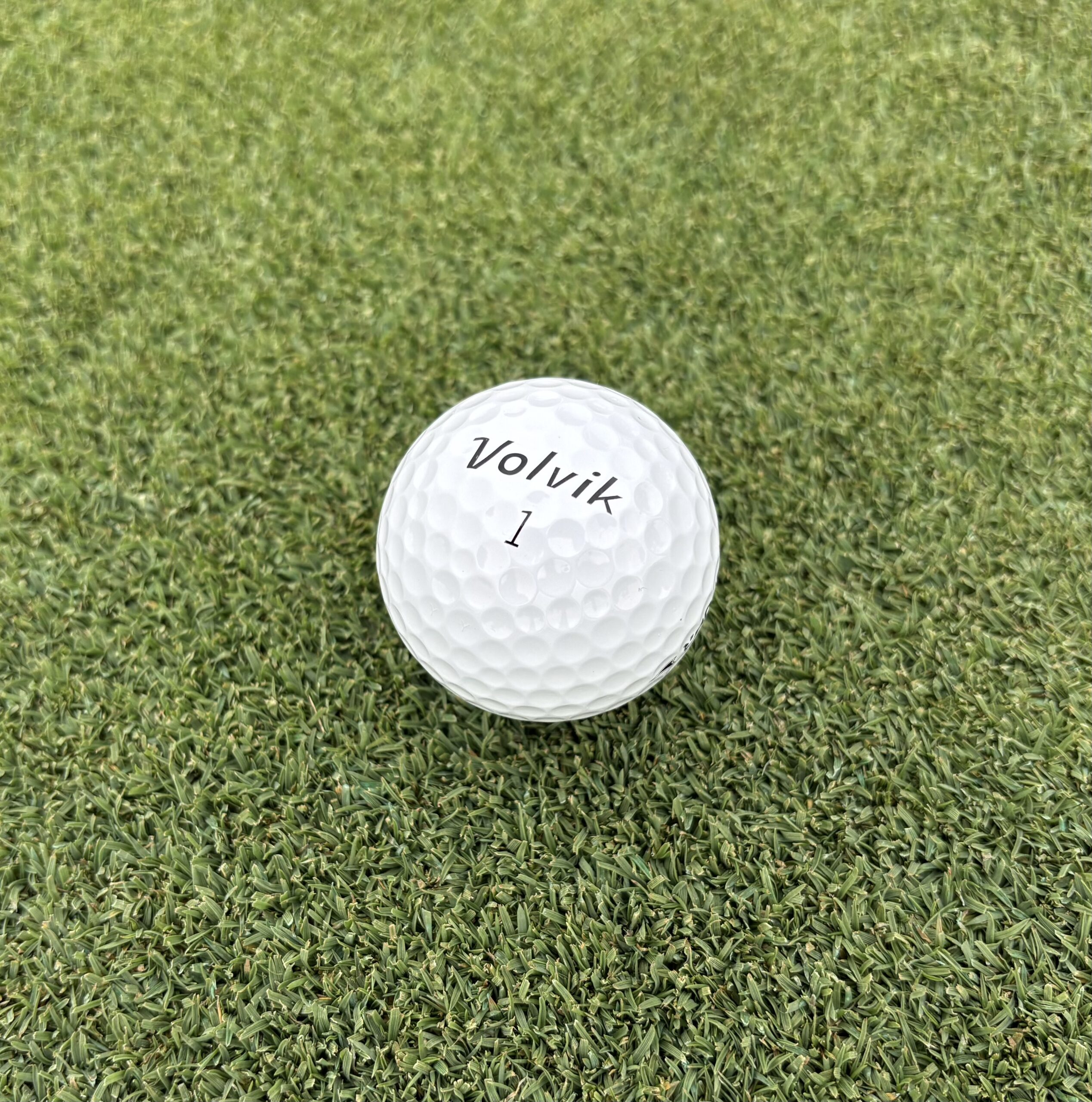
Durability is one area where a lot of golfers get skeptical about brands outside of the big ones they see on TV. After all, a scuffed urethane cover can turn a premium ball into a range ball in a single swing.
I kept a close eye on both Condor models, and the results were encouraging. Nothing scientific, but I didn’t notice wear and tear as being out of line with what I’ve seen in models like the Pro V1 and Chrome Tour.
The covers weren’t indestructible. I definitely picked up the usual scuffs from cart paths and trees. But, again, nothing out of line with what I’d expect.
Value and Comparisons: How the Condor Stacks Up
At $42.99 a dozen — only $32/dozen with the code BREAKINGEIGHTY promotion — the Condor and Condor X live in an interesting lane. They’re not bargain-bin two-piece balls, but they’re also noticeably cheaper than the $55 price tag you’ll see on the Titleist Pro V1, Callaway Chrome Tour, or TaylorMade TP5.
So where do they fit?
I’d put it this way: If you want a legitimate tour-level ball but you can’t quite stomach Pro V1 pricing, the Condor lineup deserves a look. The performance isn’t miles behind the market leaders.
And when you consider the savings, it raises the question: How much is that last 5 percent of performance really worth? For many golfers, the Condor makes a strong case that it’s not worth $20 more per dozen.
Honestly, I think most mid-handicappers, without the use of a launch monitor, would have a difficult time noting the differences between these Volvik balls and the tops from the big brands.
That said, I wouldn’t call these balls “Pro V1 killers.” The confidence some players get from using the trusted, known-quantity option that most of the pros are using goes a long way. For elite players or those who play tournament golf, the safest bet is still the household names.
But for the rest of us — the golfers who want premium feel, urethane control, and a price tag that doesn’t sting as much when you dunk one in the drink, I think Volvik has carved out a compelling value case.
Neutral flight off the tee, a mid window with irons, and true urethane hop-and-stop around the greens. If you want tour-style performance without Pro V1 money, start with the Volvik Condor. Use code BREAKINGEIGHTY to buy 3 dozen, get 1 free!
Urethane control with a firmer feel than the Condor. Suits 100+ mph swings and confident ball-strikers. If you want extra yards without giving up greenside bite, this is the ball. Use code BREAKINGEIGHTY to buy 3 dozen, get 1 free!
A legitimate Pro V1 alternative at a huge savings.
Volvik's Condor and Condor X golf balls mark a serious step forward for the brand. With urethane covers, tour-level performance, and a price tag $10 to $20 less than the Pro V1, they're among the best value plays in the premium golf ball market. They may not fully dethrone the big names, but for many golfers, the performance-to-price ratio will be tough to beat.
The Good
- Premium urethane feel at a lower price point
- Reliable short-game spin and control
- Condor and Condor X offer distinct options for different swing speeds
The Bad
- Lacks the prestige and proven track record of household brands
-
Presentation
-
Performance
-
Price
-
Personal Affinity


